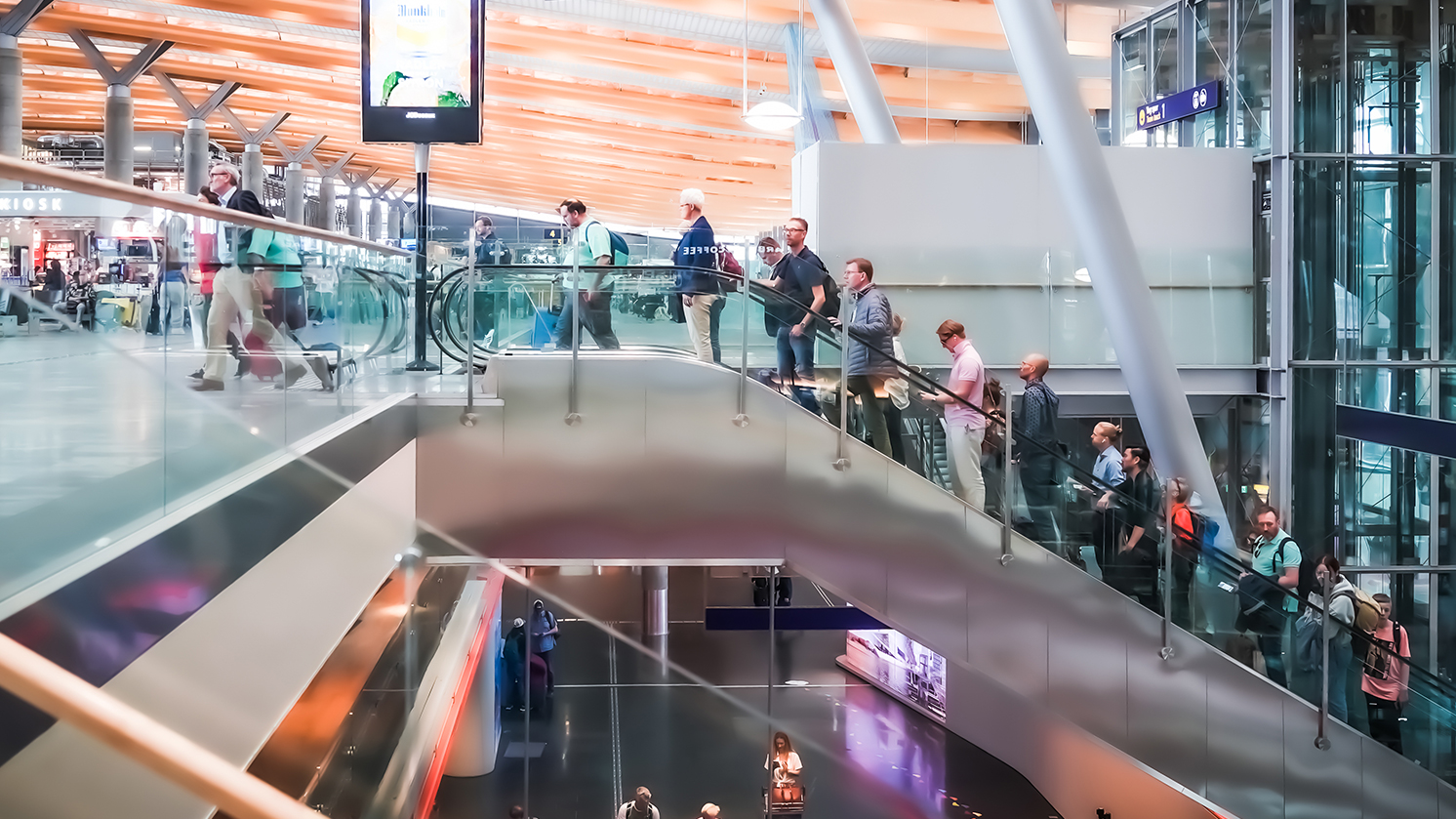How do airports smoothly handle the surge in travellers while juggling staffing constraints. AI could provide the answer.
The continued uptick in holiday bookings has led to extraordinary airport crowds.
Unfortunately, the rehiring of airport staff hasn’t kept up with traffic growth, primarily due to training needs and lengthy security clearance requirements. As a result, personnel shortages are all too evident – from the handful of officers struggling to control the long snaking lines at security to the far-too-few baggage handlers.
While technology can’t replace humans for many of the key processing bottlenecks or solve the staff crunch, it can help improve human performance – and ease some of the pressure staff feel.
The key is to put the limited resources airports have to where and when they are needed most, by using data and AI to forecast passenger show-ups and behaviour by flight accurately.
Here’s how airports can apply machine learning to help reduce the impact of the staffing crunch.
1. Shorten operational planning windows
With limited staff and schedule volatility, there is no point in creating seasonal-based plans and expecting them to be relevant. Instead, tap into up-to-date data and shorten your operational planning windows to one to two months or even weeks. The closer the planning is to your shift rostering process, the more robust it will be, with fewer buffers and changes needed on the day of operations.
2. Predict passenger show-ups per flight
Using AI to predict when passengers will arrive and their processing needs makes it easier to automate the adjustment of plans to handle schedule changes and keep you within regulatory KPIs. Build robust show-up predictions at each checkpoint by looking at the number of passengers per flight and schedules. You can also apply external data, such as roadworks and local events, that may impact planning, particularly around regional and public holidays.
3. Use live data to predict wait times and lane throughput
Sensor data from queues provides accurate insight into live wait and processing times, which can feed a revised forecast for hours ahead. The airport’s AODB also has a wealth of relevant information to help refine the forecast. Lane productivity data and comparing actual to forecast throughput is important here to help understand the reason for any differences. This also drives more accurate future forecasts.
5. Keep refining the plan to match demand
A capacity planning tool fed with a live re-forecast will recommend the best options for the current situation given the staffing constraints, such as shifting staff between zones or terminals before queues build, changing breaks or adjusting lane openings. Even small changes to shifts and staff allocations can significantly impact processing speed and efficiency, reducing the length of queues.
6. Optimise the set-up you have.
Understanding how passengers move and arrive at checkpoints before they enter queues can help optimise maze layout, minimise crowding and boost productivity. Queue balancing is a valuable tool in staff-strapped airports to direct passengers to processing lanes automatically. It considers the wait and throughput of each lane to ensure consistent queue times for all passengers.
Intelligent forecasting is the key to airport agility
Airports must become more agile and make proactive decisions based on accurate passenger information from multiple data inputs. This requires a single source of real-time truth across the airport – and continuously-revised passenger forecasts – so that the right information gets to the right people at the right time.
Moving to a data-driven planning approach is not onerous or lengthy. Airports, like Gatwick, were able to quickly integrate their existing sensors into Veovo’s data aggregation and analytics platform, giving them the real-time insight needed to improve productivity and decision-making. Other airports have established passenger forecasting tools within weeks – allowing them to plan lane opening and staff rosters far more effectively.
With AI and the right tech, operators can take steps now to improve efficiency by allocating staff to the right place at the right time – creating happier airport memories for passengers.


